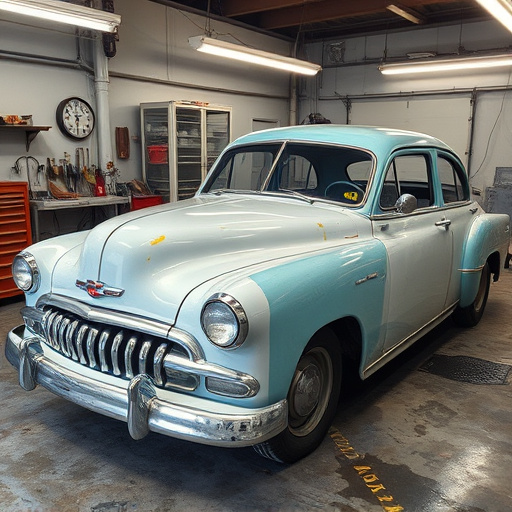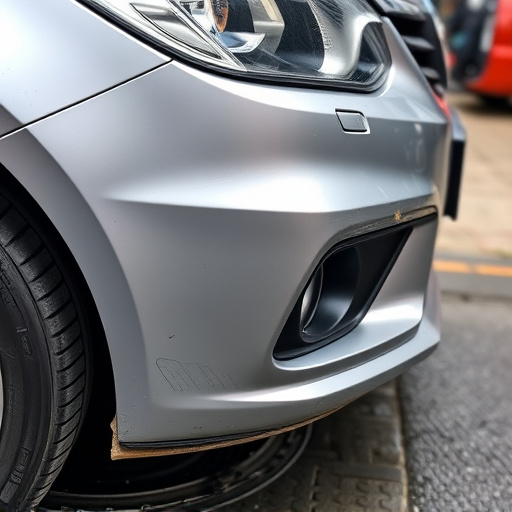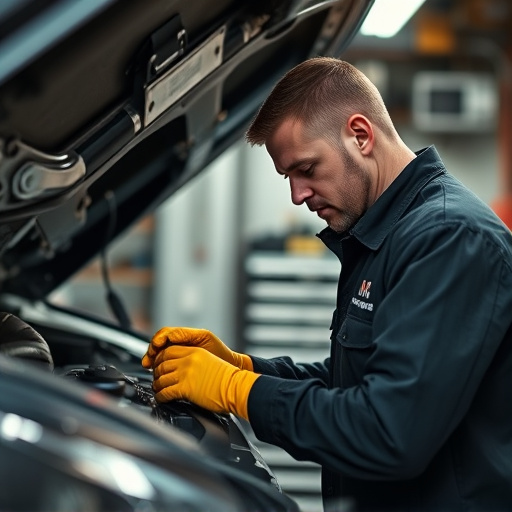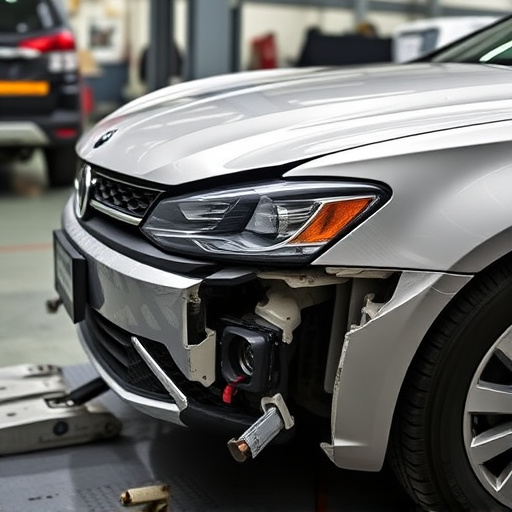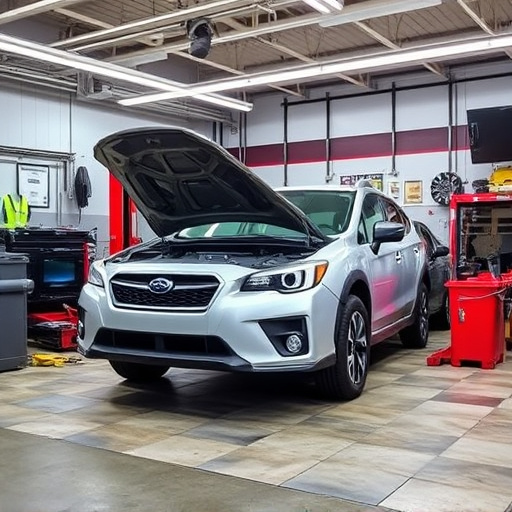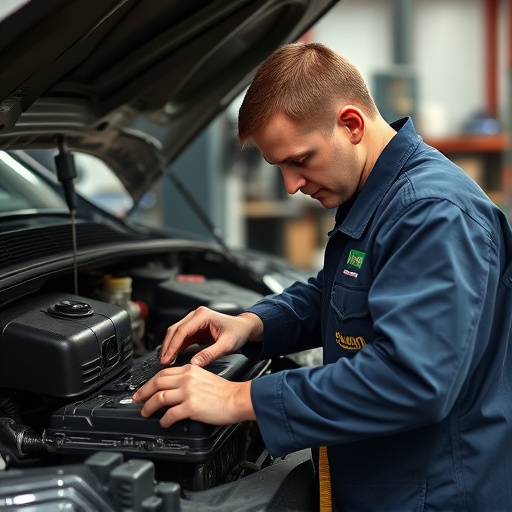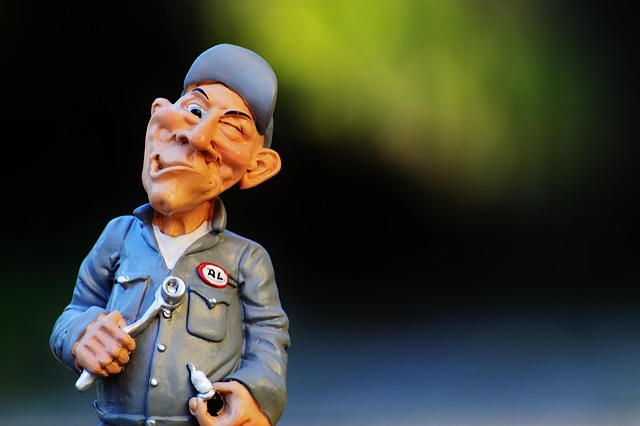When repairing a flexible bumper, go beyond superficial damage. Inspect for hidden issues like rust and structural compromise. Professional technicians diagnose and repair cracks, separations, or discoloration. The right repair method ensures durability and aesthetic appeal. Avoid DIY mistakes with proper preparation and expert help.
Damaged bumpers can be a common occurrence, but proper flexible bumper repair is essential for both safety and aesthetic reasons. Before diving into the process, understanding damage assessment is key—inspecting for dents, cracks, or deformations. Once identified, choosing the right repair method ensures optimal results. This article guides you through assessing damage, selecting suitable repair techniques, and avoiding common pitfalls to ensure a successful flexible bumper repair.
- Assessing Damage: What to Look For
- Choosing the Right Repair Method
- Common Mistakes and How to Avoid Them
Assessing Damage: What to Look For
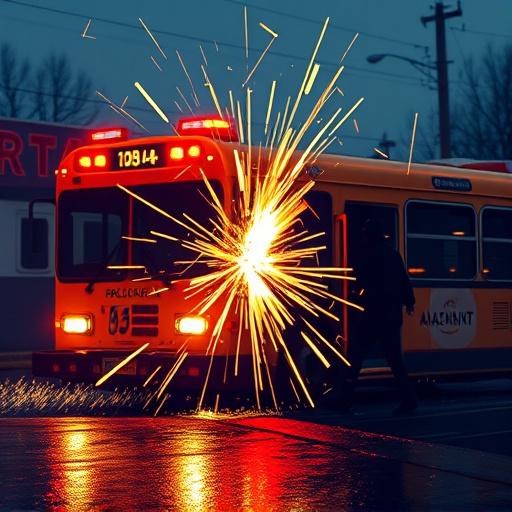
When assessing damage for a flexible bumper repair, it’s crucial to look beyond superficial scratches and dents. Flexible bumpers are designed to absorb impact energy, so torn or stretched sections, visible deformities, and misaligned components indicate deeper issues that require professional attention. These may not be immediately apparent, hence the need for thorough inspection using both visual aids and pressure points to identify any give or irregularity.
Focus on joints, mounts, and the overall structure. Signs of rust, especially in older vehicles, can point to underlying problems with moisture intrusion. Cracks, separations, or discoloration in the bumper’s material suggest structural compromise necessitating a comprehensive flexible bumper repair at a reputable car repair shop rather than DIY attempts that could lead to further damage. An expert auto painting and bodywork technician will accurately diagnose these issues and implement appropriate solutions for lasting repairs.
Choosing the Right Repair Method
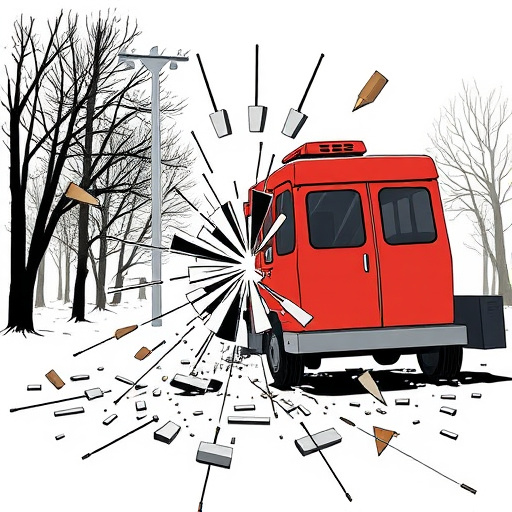
When it comes to flexible bumper repair, choosing the right method is key to achieving a durable and aesthetically pleasing result. The first step is assessing the extent of the damage. Minor dents or scratches can often be fixed with car paint repair techniques such as touch-ups or plastic welding, which are suitable for restoring smooth surfaces. For more severe cases, especially involving hail damage repair, a complete bumper replacement might be necessary.
In between these two extremes lies classic car restoration, which requires meticulous attention to detail and specialized knowledge. This method is ideal when the bumper has significant structural issues but still retains some original parts that can be saved or recreated. By selecting the appropriate repair approach, whether it’s a quick fix for minor bumps or a complete overhaul, you can ensure your flexible bumper looks as good as new while saving time and money.
Common Mistakes and How to Avoid Them

Common Mistakes to Avoid During Flexible Bumper Repair
One of the biggest pitfalls in flexible bumper repair is attempting DIY repairs without proper training or equipment. This can lead to subpar results and potential safety hazards, as misaligned or poorly installed components can compromise vehicle stability. It’s crucial to seek professional help from fleet repair services or car bodywork experts who have experience with vehicle paint repair and understand the intricacies of modern bumper systems. They’ll ensure that repairs match the original specifications, preserving both aesthetics and structural integrity.
Another common mistake is neglecting prep work before applying any repairs. Skipping necessary preparation steps like cleaning, degreasing, and sanding can result in poor adhesion of replacement parts or paint, leading to premature fading or chipping. Always take your time to properly prepare the bumper surface using appropriate car bodywork services techniques. This foundation is key to achieving a lasting, high-quality flexible bumper repair that looks as good as new.
When undertaking a flexible bumper repair, it’s crucial to thoroughly assess the damage, select the appropriate repair method for your vehicle’s unique needs, and avoid common pitfalls. By being diligent in these areas, you can ensure a successful and lasting fix. Remember that choosing the right approach from the outset, while understanding potential challenges, is key to achieving optimal results in flexible bumper repair.


